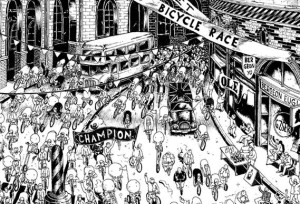Urban planners all over the world are trying to figure out how to set aside space for bicyclists. Now, a study by McGill University researchers is dividing them into four types — and finding they don’t all have the same needs.
The study, which I wrote about for Forbes.com, measured responses from 2,000 cyclists around Montreal. It divides cyclists into four main types.
Path-using cyclists (36 percent) are motivated by convenience, the fun of riding, and the identity that cycling gives them. They would rather use bike paths than deal with traffic, and are the most likely to advocate for dedicated bike lanes. These are people whose parents actively encouraged them to cycle.
Dedicated cyclists (24 percent) are motivated by speed, predictability and flexibility that bike trips offer. These cyclists are the least likely to be deterred by the weather. They aren’t as interested in bike paths, and actually enjoy riding in traffic. The researchers say these cyclists consider riding to be an important part of their identity.
Fairweather utilitarians (23 percent) are just that. They like to ride in good weather, and they’ll take another form of transportation in rain or snow. These are also bike path users, and they don’t necessarily see themselves as cyclists.
Leisure cyclists (17 percent) ride because it is fun, and not as much for commuting. They prefer bike paths, don’t like to deal with traffic, and want to feel safe, especially when riding with family members.
Montreal has a unique cycling culture. It’s the most cycling-focused city in Canada, with Bixi bike-sharing bikes, bike lanes and a coordinated transit system. Worldwide, it’s considered the 11th most bike-friendly city, according to the Copenhagenize survey.
Do you think these are the right categories for cyclists? Where do you fit in, and would you add to these labels?

